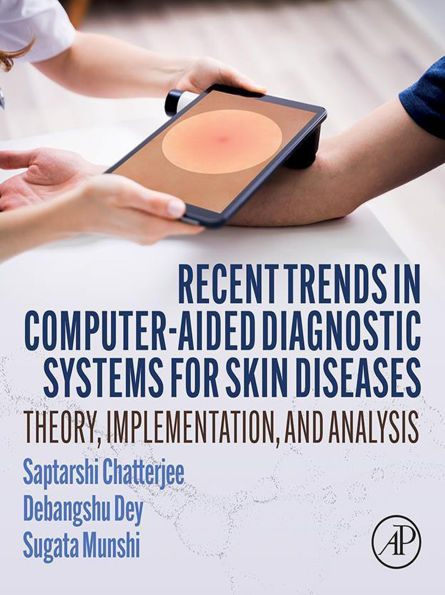Recent Trends in Computer-aided Diagnostic Systems for Skin Diseases: Theory, Implementation, and Analysis
Recent Trends in Computer-aided Diagnostic Systems for Skin Diseases: Theory, Implementation, and Analysis provides comprehensive coverage on the development of computer-aided diagnostic (CAD) systems employing image processing and machine learning tools for improved, uniform evaluation and diagnosis (avoiding subjective judgment) of skin disorders. The methods and tools are described in a general way so that these tools can be applied not only for skin diseases but also for a wide range of analogous problems in the domain of biomedical systems. Moreover, quantification of clinically relevant information that can associate the findings of physicians/experts is the most challenging task of any CAD system. This book gives all the details in a step-by-step form for different modules so that the readers can develop each of the modules like preprocessing, feature extraction/learning, disease classification, as well as an entire expert diagnosis system themselves for their own applications. - Demonstrates extensive calculations for illustrating the theoretical analysis of advanced image processing and machine learning techniques - Provides a comprehensive coverage on the development of various signal processing tools for the extraction of statistical and clinically correlated features from skin lesion images - Describes image processing and machine learning techniques for improved uniform evaluation and diagnosis of skin disorders
1139735094
Recent Trends in Computer-aided Diagnostic Systems for Skin Diseases: Theory, Implementation, and Analysis
Recent Trends in Computer-aided Diagnostic Systems for Skin Diseases: Theory, Implementation, and Analysis provides comprehensive coverage on the development of computer-aided diagnostic (CAD) systems employing image processing and machine learning tools for improved, uniform evaluation and diagnosis (avoiding subjective judgment) of skin disorders. The methods and tools are described in a general way so that these tools can be applied not only for skin diseases but also for a wide range of analogous problems in the domain of biomedical systems. Moreover, quantification of clinically relevant information that can associate the findings of physicians/experts is the most challenging task of any CAD system. This book gives all the details in a step-by-step form for different modules so that the readers can develop each of the modules like preprocessing, feature extraction/learning, disease classification, as well as an entire expert diagnosis system themselves for their own applications. - Demonstrates extensive calculations for illustrating the theoretical analysis of advanced image processing and machine learning techniques - Provides a comprehensive coverage on the development of various signal processing tools for the extraction of statistical and clinically correlated features from skin lesion images - Describes image processing and machine learning techniques for improved uniform evaluation and diagnosis of skin disorders
130.0
In Stock
5
1

Recent Trends in Computer-aided Diagnostic Systems for Skin Diseases: Theory, Implementation, and Analysis
204
Recent Trends in Computer-aided Diagnostic Systems for Skin Diseases: Theory, Implementation, and Analysis
204
130.0
In Stock

Product Details
| ISBN-13: | 9780323914666 |
|---|---|
| Publisher: | Elsevier Science & Technology Books |
| Publication date: | 11/07/2021 |
| Sold by: | Barnes & Noble |
| Format: | eBook |
| Pages: | 204 |
| File size: | 19 MB |
| Note: | This product may take a few minutes to download. |
About the Author
What People are Saying About This
From the B&N Reads Blog
